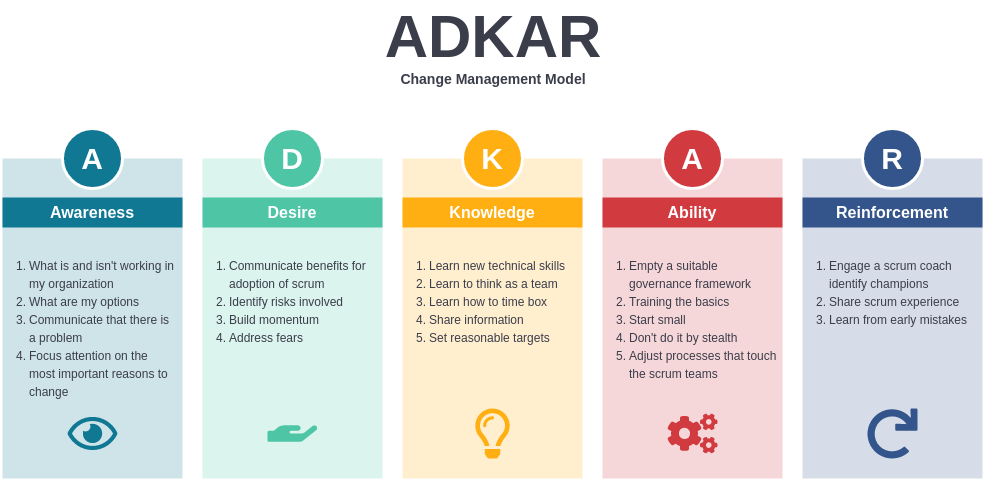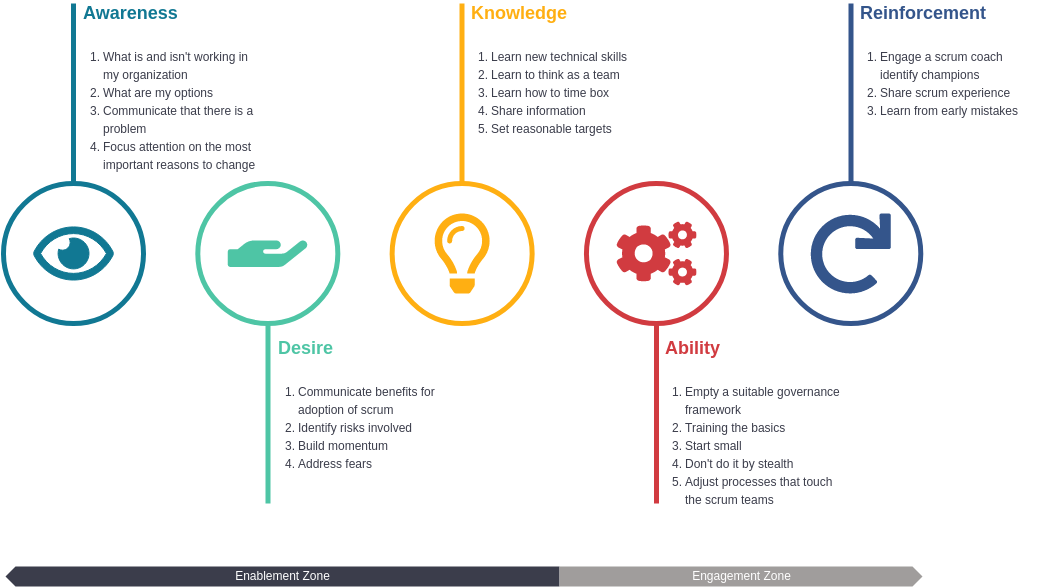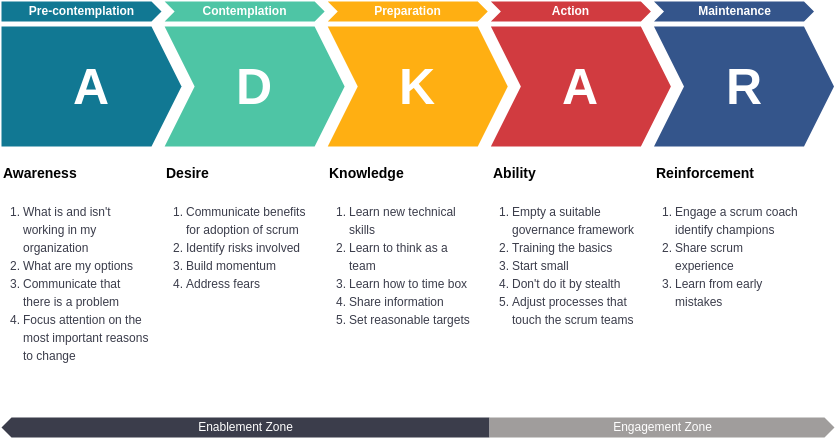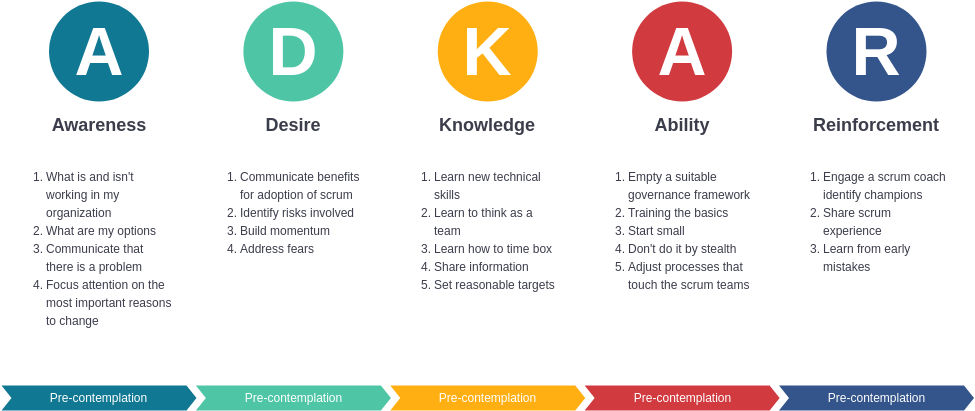ADKAR Model for Change Management
In this era of rapid change, if you can’t keep up with the times, you will definitely be left far behind. But many people say “To change is to seek death, and not to change is to wait for death”! So, how to change to succeed?
Nokia’s failure is typical, drunk on its past glorious achievements, unaware of the changes of the times, and eventually can only close its doors.
Microsoft, under the leadership of its new head, has shifted its focus from operating systems to cloud services, reinvented its company culture, and returned to center stage, showing us that a giant can turn around quickly, start over, and recreate glory.
Change has become an unavoidable topic for enterprises or individuals
Ability to change – the basic ability that a business or individual should have
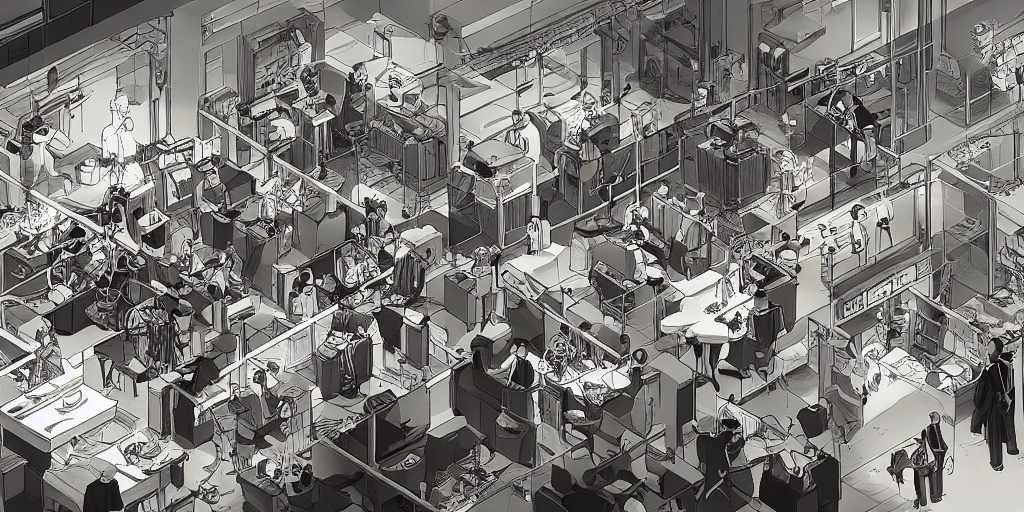
How to Manage Change?
Change must start with the smallest unit and then spread to the whole, from partial to comprehensive. Organizations that want change to be successful must start with individual change. How to make individual change successful? Thus,
Change is strategic, change is step-by-step, and change needs to be managed.
The ADKAR Change Model was created in this context.
What is ADKAR Change Model?
As mentioned earlier, change is often a complex and difficult process, and more importantly, it is inevitable. Managing change at the individual and organizational levels requires new ideas, new models of change, and new frameworks and tools to successfully achieve the desired change. ADKAR can be applied to all forms of change to drive successful change programs.
The ADKAR Transformation Model, created by Prosci founder Jeff Hiatt, consists of five initials that represent the five stages of change an individual must reach to succeed. Awareness, Desire, Knowledge, Ability and Reinforcement.
ADKAR Change Development Process
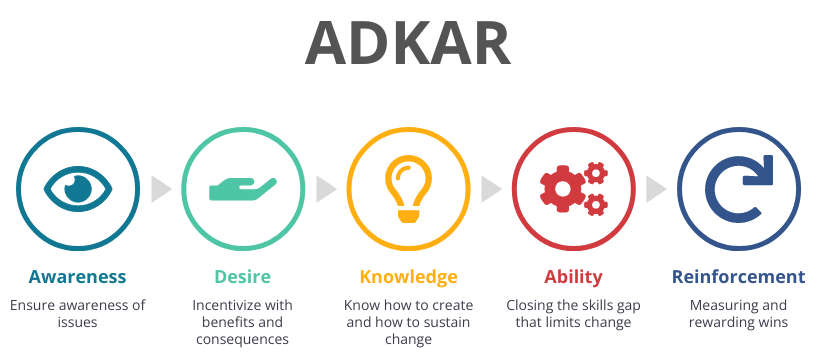
Awareness: Whether the actor is aware of the planned change, and the need and importance of the change.
From the ADKAR analysis, we found that the key driver of change is “Awareness Perception”, if the actor cannot perceive why they want to change and what is the reason for change. Then change cannot occur. Cognitive building is the most critical aspect of a change initiative, and actors’ cognitive sources are internal and external influences. External influences generally come from the opinions of powerful people around them, such as the herd mentality.
Desire: Whether the actor has the will to change, what to expect from the change, and whether to support or oppose it.
After the cognition is established, the actor starts to act, and the key to influence the action is WIIFM (What In It For Me), which is the nature of human beings, and this is where the “Desire” starts to arise. A strong desire will strengthen the actor’s expectation of the change. At this point the drive for change will switch from external influence to self-expectation, expecting the change to come true.
Knowledge: Whether the actor has the necessary knowledge to carry out the change.
After the demand is generated, the actor needs to have the relevant knowledge to take action for the change, and the need for “Knowlege knowledge” emerges. With complete knowledge, the change can be completed more smoothly.
Ability: Whether the actor is capable of leading, implementing, and completing the change.
With the relevant knowledge, the key to success in the actual implementation of change is the “Ability”, which is determined by the actor’s own conditions, such as IQ, physical ability, and experience. This process depends on the conditions of the actors themselves. If the conditions of the actors cannot fulfill the expectations of change, the change will fail even through the previous process of cognition, desire and knowledge. If the coaching program is introduced at this stage and one-on-one coaching is provided to help the actors stimulate their potential and break through their self-imposed boundaries, they will be able to successfully implement the change and accomplish the change goal.
Reinforcement: Whether the actor has measures in place to solidify the state, habits, and results of the change.
When the actors achieve the goal of change, the results of change will be solidified and form a habit, which becomes an important goal of this process. At this point, motivation and other means are used to reinforce the positive results and complete the change cycle.
ADKAR example
For example, if you have the idea to learn French, first you know that learning French is important to you and that learning French well can bring you many benefits. And the stronger the motivation, the more motivated you will be to learn French. At this point, you see your colleagues moving up in the workplace quickly because of their fluency in French and their success in leading multinational projects. It will inspire you to be eager to learn French, because excellent foreign language skills are a must in the workplace. Enroll in a study session to learn French. After a period of study, you have mastered the key to learning French and your French skills have improved. At this time there is an opportunity to get an organizational award for a job well done because of your French ability, and then I believe you must have a stronger desire to learn French. We used the ADKAR model to analyze the results as follows.
- Awareness: The importance of learning French
- Desire: Seeing others improve gives you the power to drive yourself
- Knowledge: the effort to learn French
- Ability: Having the French skills needed to do the job
- Reinforcement: To do a good job, get an award from the organization, and study harder
More ADKAR Change Model Examples and Templates
ADKAR is an acronym for the five tangible and concrete results people need to achieve lasting change. Awareness, Desire, Knowledge, Ability and Reinforcement. The ADKAR model helps organizations get the most out of their change initiatives.
Visual Paradigm Online offer a wealth of customizable ADKAR templates to help you get a head start on creating your own ADKAR.
ADKAR Change Model
